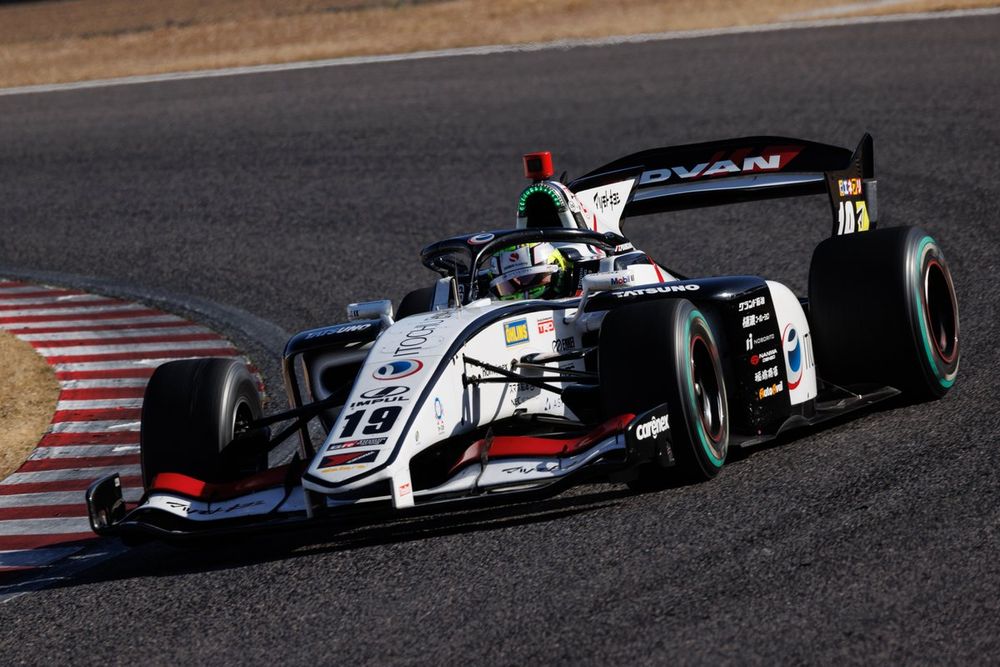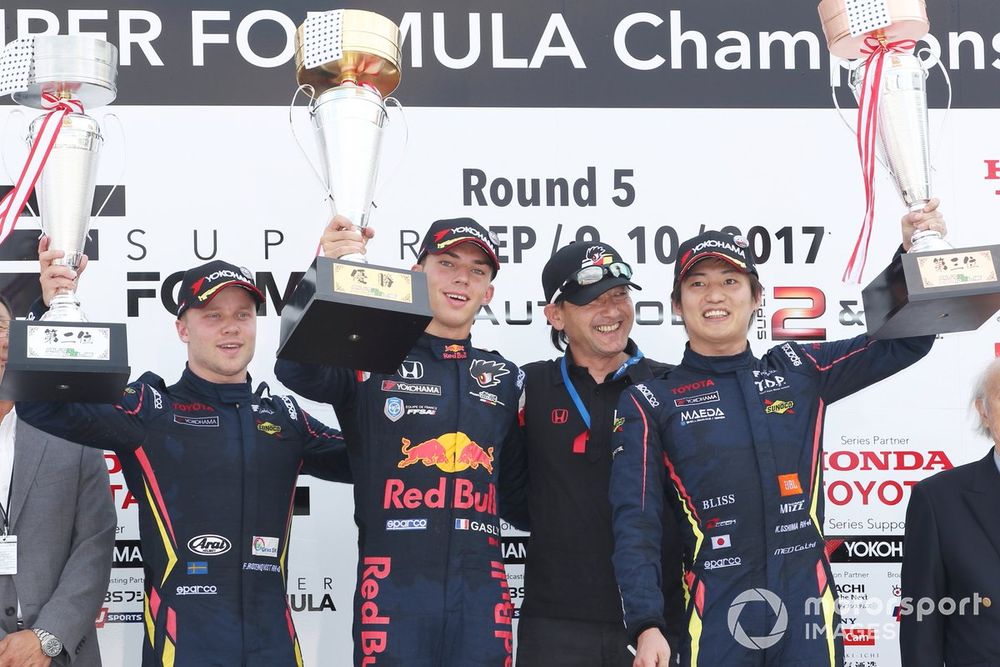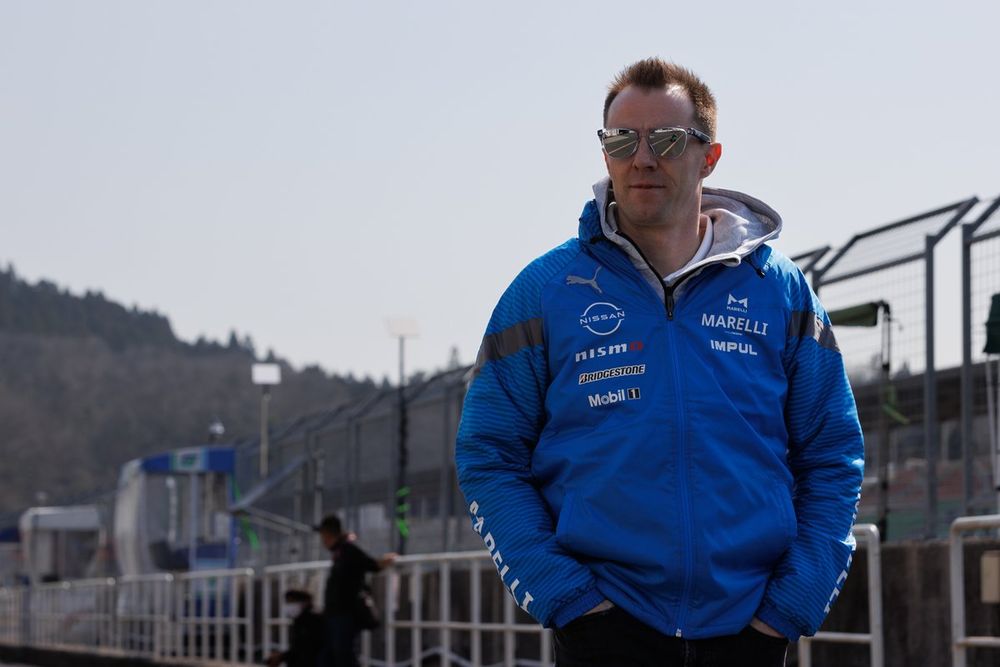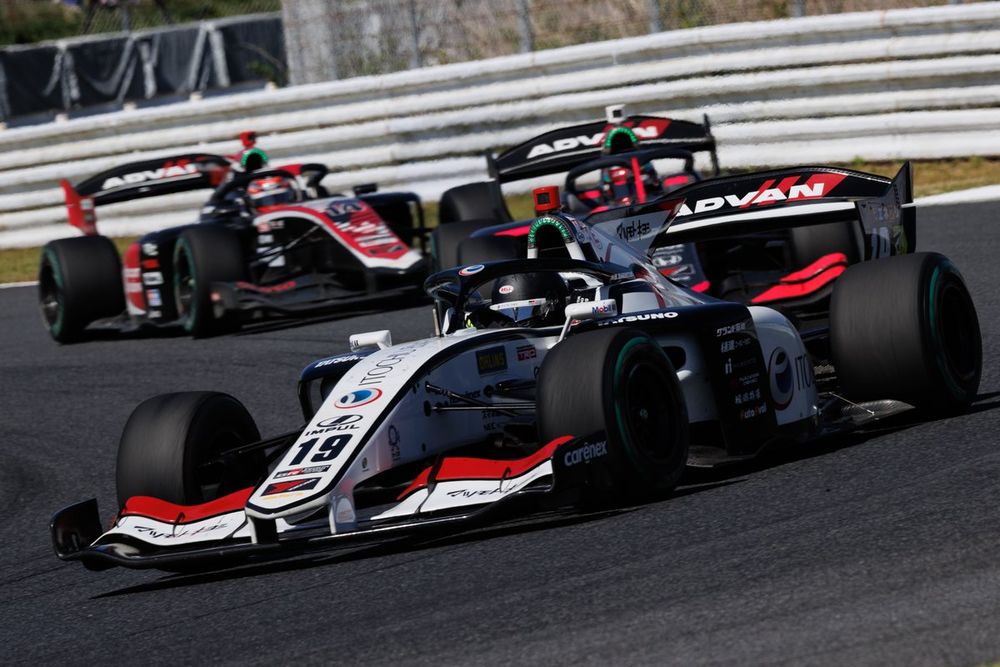Last weekend’s Super Formula round at Sugo was the first in almost 50 years to feature no international representation. All 20 drivers who lined up on the grid, plus Naoki Yamamoto who couldn’t take the start due to a warm-up crash, were of Japanese nationality.
Super Formula/Formula Nippon and its precursors All-Japan Formula 3000 and All-Japan Formula Two went through a number of troughs and crests in the last five decades, but there was always a constant flow of ‘gaijin’ drivers in the country’s premier single-seater championship. So the fact that the Sugo race went ahead with an all-Japanese line-up was nothing short of a travesty for promoter JRP.
Only last year, its president Yoshihisa Ueno talked about having 10 foreign drivers in the future as part of an expanded 30-car grid. With Ueno and his team having to start again from zero after Theo Pourchaire’s move to IndyCar, that goal now seems like a pipe dream.
It was the COVID pandemic and the subsequent travel restrictions in Japan that triggered the current slump of international participation in Super Formula. The championship went from having almost a third of the grid comprising overseas racers to just two full-timers in 2021-22.
The trend began to reverse last year, as Red Bull junior Liam Lawson, Raoul Hyman and Cem Bolukbasi all joined incumbent Giuliano Alesi, but all four either left the championship of their own accord or couldn’t find a seat on the 2024 grid, leaving newcomer Pourchaire as the only non-Japanese driver at the start of the season.
This wasn’t exactly a bad thing, given the Frenchman was arriving as the reigning Formula 2 champion and with a point to prove in Japan. Ultimately though, Pourchaire’s Super Formula campaign lasted just a single weekend, as a surprise IndyCar call-up from Arrow McLaren prompted him to cut the cord with Team Impul and move to North America.

Pourchaire spent just one weekend in Super Formula before deciding to up sticks for IndyCar
Photo by: Masahide Kamio
Even after his sudden axe from Arrow McLaren last week, both Pourchaire and his backer Sauber remain keen on finding a new home in IndyCar instead of returning to Japan, which shows Super Formula is nowhere near as attractive a proposition as its American rival.
To Impul’s credit, it did initially sign another international driver — and of a very high calibre — to stand in for Pourchaire in the form of Lexus factory ace Ben Barnicoat at Autopolis. But due to the Briton having firm commitments in the IMSA SportsCar Championship, he was always going to be a one-off substitute for Pourchaire rather than a full-time replacement.
Even now Impul is yet to decide on who will take the seat of the #19 SF-23 after Hibiki Taka joined the team on a similar one-round basis at Sugo, but it is likely that a homegrown driver will be called in again. So just why is Super Formula left with no foreign drivers on the grid three rounds into the 2024 season?
The series went from hosting races that were nearly as long as a full-grand prix to 180km sprints without refuelling after the pandemic. Added to that, downforce has been slashed to improve the spectacle
It’s certainly not due to a lack of trying from the stakeholders. JRP has been trying very hard to increase the international appeal of the series and is targeting increased participation of drivers from abroad, particularly from Asia. Both Super Formula and Suzuka Circuit also remain keen on hosting a race on the support bill for the Japanese Grand Prix in the near future, a move that certainly will put the series on the international spotlight.
Honda, actively involved as an engine manufacturer, also ran a scholarship programme in the US that put forward a budget of $600,000 towards a Super Formula campaign for the winner of Formula Regional Americas. However, Hyman was the only driver to take up the offer since the programme began almost four years ago, and it appears Honda has now abandoned the scholarship, partly due to Ligier replacing the Tokyo-based marque as the US series’ sole engine supplier.
With those points considered, it’s clear that the real reasons behind the dearth of international drivers in Japan run deeper than that. One could argue that Super Formula is not as strong a proposition for a junior driver hoping to graduate to F1 as it was when the likes of Stoffel Vandoorne and Pierre Gasly joined the grid in 2016-17 and triggered a resurgence in Japan.
The series went from hosting races that were nearly as long as a full-grand prix to 180km sprints without refuelling after the pandemic. Added to that, downforce has been slashed to improve the spectacle, which obviously has had a negative impact on the lap times. For instance, Sena Sakaguchi’s pole time with the SF23 in this March’s Super Formula round at Suzuka was 7.5s slower than the time with which Red Bull F1 driver Max Verstappen topped the qualifying for the Japanese GP in April.
Moreover, three of the top five drivers in the standings last year are no longer on the 2024 grid, with Toyota-backed Ritomo Miyata and Ryo Hirakawa joining Lawson on the list of exiles.

Gasly came through Super Formula on his way to F1, while Felix Roseqnvist used it as a springboard to IndyCar, but attracting international talents today is proving tough for the promoter
Photo by: Masahide Kamio
But even then, the SF23 remains the fastest car outside F1, while Super Formula as a championship is still one of the most competitive to exist in the world. So, there must be other factors behind why the series can’t attract international drivers.
One that is clearly playing a big role is the cost of entry into the series. Some teams in Japan have become increasingly reliant on income from drivers to put together a Super Formula campaign. Where previously only the outfits at the lower end of the grid required drivers to bring a budget, now a larger part of the grid is looking at pay drivers to prop up their finances. Budgets in Super Formula are still a fraction of what they are in F2, or even the top squads on the rung below in Formula 3, but it’s still a big commitment for drivers without wealthy backgrounds.
It also marks a major shift in the landscape of Japanese motorsport, as Super Formula and its precursors previously offered up-and-coming drivers a chance to become professional racers and rake in big cheques. That’s not to say the teams at the sharp end of the grid do not provide handsome salaries to drivers, either directly or through Honda and Toyota, but the series is no longer as lucrative for foreign drivers as it was during its heydays.
One must also not forget that a number of international drivers used to make Japan their home and spend their entire lives competing in Super Formula and Super GT on factory contracts. But, with time, most of those have ended up focusing entirely on Super GT, leaving Super Formula with limited gaijin participation.
This year’s Super GT grid for instance features a number of foreign drivers in both GT500 and GT300 classes, including the likes of Ronnie Quintarelli and Joao Paulo de Oliveira who long ago left their homelands and moved permanently to Japan. But de Oliveira was last a Super Formula regular in 2016, while Quintarelli’s last season was back in 2008, the year before Loic Duval, Benoit Treluyer and Andre Lotterer locked out the top three in the standings.
There are a number of reasons why the likes of Quintarelli, de Oliveira and others no longer race in Japan’s premier single-seater series. Results are clearly a factor, especially for drivers in their late 30s and early 40s, but manufacturer involvement also plays a big role.
While Honda, Toyota and Nissan have full factory teams in Super GT’s GT500 class, their involvement in Super Formula is much lower in comparison. In the view of increasing budgets, it’s harder for Honda, Toyota and particularly Nissan to find a place for all their factory drivers in Super Formula, especially with some teams leaning towards pay drivers.

International talents including Bertrand Baguette are still common in Super GT where manufacturer budgets are a greater factor
Photo by: Masahide Kamio
Then there’s the question of Super Formula’s popularity itself. While the series may be well known to those who follow F1, and it’s certainly seen in high regard by outsiders, the reality is that it is nowhere as famous as its GTA-run sibling. In fact, despite all of JRP’s efforts, Super Formula is still struggling from the aftereffects of the pandemic and is yet to reach the trackside figures of 2019. At a number of small circuits, it is still struggling to attract more than 10,000 fans through the gates on race days.
Super GT, with all its manufacturer might, is on another level. Not only are the spectator numbers much better on the lower end, its flagship Fuji Golden Week event attracted 53,900 spectators on race day this year.
Ultimately though, the popularity of Super Formula and Super GT goes hand-in-hand. While it’s important to have more rising stars plying their trade in the Dallara-built SF23 and use that as a springboard to land a drive elsewhere, more needs to be done to make Super Formula (and Super GT) a longer-term destination for foreign drivers. Only then can JRP avoid a repeat of the situation it has ended up in following Pourchaire’s abrupt exit from the series.

Can the promoter increase Super Formula’s appeal to international drivers?
Photo by: Masahide Kamio








